Category:
Bria Mack gets a show
Bria Mack gets a show
With a unique premise, fresh voice and potential to reach a wide, often underserved audience, Bria Mack Gets a Life feels like a new chapter in Canadian television. Has New Metric struck gold once again?
Of course, there is no such thing as a CanCon formula. But if there were, this ain’t it.
After graduating university, a 25-year-old Black woman, Bria McFarlane, enters her professional life with optimism and youthful energy, only to find a soul-sucking world that is overwhelmingly white, and complicated by unwritten rules and confusing corporate norms. Complicating matters is her imaginary hype girl, Black Attack, who accompanies Bria everywhere, offering honest, if not always helpful, advice.
Bria Mack Gets a Life, whose first season hits Crave this fall, will make a lot of people laugh.
Very likely, many will see themselves in Bria, the title character. It will also raise a lot of questions, chief among them: Why haven’t we seen anything like this before?
A BRIEF HISTORY OF BRIA

Mark Montefiore (left), founder and CEO of New Metric Media, loves to tell this story. In 2018, he sees a short film of Sasha Leigh Henry’s, Bitches Love Brunch, on the Facebook page of Tania Thompson, Henry’s longtime collaborator. He finds it hilarious, and he reaches out to Thompson, who puts him in touch with Henry. On their first Skype call—this was pre-pandemic, after all—Henry is in Thailand, Thompson is in Japan, and Montefiore is in the UK, and the connection is patchy at best.
“It was choppy, but I was laughing my head off at everything that was making its way through,” says Montefiore. “Sasha was just talking about regular, day-to-day stuff, but I was dying.” He asks Henry if she has any ideas for television, and she walks him through the opening scenes of what would become Bria Mack Gets a Life. Bad connection and all, Montefiore is blown away: “My God, this is brilliant,” he thinks. They decide to develop the idea together.
At the time of her call with Montefiore, Henry had written, directed and produced her share of indie films, but had never worked in television. She didn’t have a series arc planned when she started the development process with New Metric, but she wasn’t daunted. “I’m very much a ‘do what you can with what you have while you can’ type of person,” she says.
New Metric’s interest in Bria Mack shouldn’t be surprising. The company has staked its claim to authentic voice and vision atop beloved niche series like Jared Keeso’s fast-talking small-town sitcom Letterkenny and its amateur-hockey-league spinoff, Shoresy. Like those shows, Bria Mack will air in October as a Crave Original.
“We’re always looking for unique Canadian stories told by underrepresented voices that should be amplified to a mass audience,” says Justin Stockman, VP, Content Development & Programming at Bell Media (Crave’s parent company). “And with the creative force of Sasha Leigh Henry, Bria Mack Gets a Life is a show we knew we needed to get behind.” Everyone who’s come into contact with the show so far seems to feel the same way. What’s it got that everyone wants?
POWERFUL VOICE, PERSISTENT VISION
“She’s got such a quality about her that resonates with anybody” (Montefiore).
“An amazing writer and thinker” (producer Tamar Bird).
“A really extraordinary voice in Canada” (actor Preeti Torul).
“Brilliant” (Thompson).
Everyone on the Bria Mack team is united in their praise for Sasha Leigh Henry, the show’s creator, executive producer, showrunner and co-director. When you hear her speak, you begin to understand why.
She’s laid back but sharp, dishing out industry wisdom and f-bombs in equal measure.
At the time of her first call with New Metric, Bria Mack “was an idea that had been gnawing away in my brain,” says Henry. When she shared that idea with Montefiore, something bigger had a chance to be born—but Henry remains at the helm from start to finish. She gets to do her show her way, which allows for a very distinctive POV to shine through.

Henry’s collaborators call the show “audacious,” “truthful,” “pure gold” and “fucking hilarious.” The show, then, sounds a lot like Henry herself. “Bria is a very good person, just trying to get through life the way she wants to get through life,” explains Thompson, who is an executive producer on the project, “and the world around her wants her to conform. I think that Sasha’s brilliance was knowing that to make your way through life like that is hard. You kind of do need a hype girl or a hype guy.”
“They actually asked us to validate that, and we found that 63 per cent of the women who are currently working in STEM were inspired by her,” confirms Di Nonno.
It’s possible that, as a newcomer to the TV industry, one of Henry’s chief strengths is her Bria-like ability to shut out all the noise about “broadest appeal” and “audience realities,” and resist any pressure to make her show fit someone else’s idea of what her show should look like.
“We need to give audiences more credit,” says Henry, bemoaning the lack of risk taking in Canadian television— and the tendency to view series like Schitt’s Creek and Kim’s Convenience as odds beaters, instead of the standard at which we could be making all shows. “Like, here’s something: why don’t we try it? Especially in comedy: comedy is our jam. Comedy is something in which we have always stood out, especially against the constant juggernaut that is American media.”
ITS OWN HYPE SQUAD
Henry may be its driving force, but Bria Mack is hardly a solo endeavour. The crew is stacked from top to bottom with people who want to see it succeed as much as Henry does—and are filled with the same determined optimism as Bria (and Henry) herself. “To the degree that the show is groundbreaking, which of course we believe it is, it’s not just the content of the show, but it is definitely how the show was made,” says
Thompson. “I just think about how many people of colour were on that crew, how many female crew members were heads of departments, and how pleasant that set was to be on—on a tight budget and under all the constraints of being first-timers, as a lot of people were. It was a spectacularly run show.”
To Thompson’s point, the show was created largely by Black women, from Henry and her co-director Kelly Fyffe Marshall to producers Tamar Bird and Angelique Knights and co-producer Jessica Meya. They’re rightfully proud of this fact.

“This show delivered and showcased brilliant, brilliant people. More so, it showcased brilliant women,” says Bird. “And the world tells us that we can’t come together and lead. I think we crushed that.”
Angelique Knights (right) had done time in marketing and acquisitions at various Canadian networks when she met Montefiore in 2021. Da Kink in My Hair, Global’s Caribbean-Canadian hair-salon sitcom, had resonated with her household when she was growing up—but that was 15 years ago. Knights had a strong sense that the Canadian television landscape was missing valuable voices, particularly Black voices. As a huge fan of Letterkenny, she began to pitch ideas to Montefiore (“If he’s making this show, there’s got to be other shows that he sees the potential in”), and he eventually showed her New Metric’s slate. Bria Mack Gets a Life jumped out immediately, and she was taken on as the show’s creative producer.

Actor Preeti Torul (left), who plays Ami Kennedy, Bria’s best work friend and only coworker of colour, believes the show is important too. She appreciated the chance to play a “human character,” instead of a stereotype or a model minority. “In this industry, I’m always South Asian first. In Bria Mack, my character gets to be flawed and funny, too,” she says.
From the crew to the production company to the broadcast partner (“Bell is an incredible supporter of fearless content, and we knew that they would get it and not try and change the whole thing,” says Montefiore), Bria Mack has an army marching lockstep behind it, intent on bringing Canada something it’s never seen before.
THE UNIVERSAL IN THE PARTICULAR
If Bria Mack soars the way the Bria Mack team believe and hope it will, yes, its success will be thanks to Sasha Leigh Henry’s irresistible POV and a stellar team who was passionate about bringing it into the world. But its success will also be largely due to its ability to reach an audience—Black Canadians between the ages of 25 and 35, particularly women—that has been underserved and basically ignored for far too long.
“Good on New Metric for doing a risky show from the POV of a Black storyteller and through the eyes of a young Black woman in Toronto, which has barely been done in Canadian television,” says Torul. “Even though that shouldn’t be risky.”
It shouldn’t be, and perhaps Bria Mack will prove that it doesn’t need to be. As Knights points out, there are large swaths of Canada’s TV-watching public that rarely, if ever, get to see themselves or their communities on screen. Why should they have to turn to American shows for that?
“Canadians want to see Canadians on screen, especially Black Canadians,” Knights insists.
Of course, having a specific audience in mind needn’t limit the show’s reach. (Does Letterkenny only appeal to hicks, skids and jocks?) As Thompson points out, “Sometimes it’s more fun if you know absolutely nothing about the experience you’re watching. Because then you feel like you’re learning something, or you’ve got a porthole into, for example, mid-thirties women and their sex lives in New York.”
For her part, Henry believes her show has “huge international potential” for two reasons: one, the idea of being “the other” in any space, which “has impact for tons of different marginalized people or people that feel sidelined.” Two, a prominent theme in the show is the tension between the relentless productivity the workplace demands of us and the quality of life we want to enjoy.
“Apparently people in Tanzania are happy, so maybe they’ve figured out a way to do it better,” she jokes. “But it’s something people everywhere else can relate to.”
She may like to make do with what she’s got, but if the show gets renewed after season one, Henry won’t be caught unprepared. “I definitely have ideas for season two, season three, even season four,” she says. But she also recognizes that, in some ways, Bria Mack will have to find her own way, and her own audience, out there in the cruel world.
“Bria Mack will take on its own life as we go, and we’ll see where it goes from there,” she says.
You can bet the show’s hype squad will be cheering it the whole way.
Clean air
Clean air
What the broadcasters’ new sustainability initiative means
for producers, the industry and the planet
BAND OF BROADCASTERS
When a coalition of Canadian broadcasters announced at the Banff World Media Festival in June 2023 that they were banding together to tackle environmental sustainability in the screen sector, producers were surprised—but not unpleasantly so.
Marsha Newbery, who is Senior Director of Sustainability and Business Affairs at Thunderbird Entertainment, is passionate about climate action in her industry. “Climate change is a massive issue—perhaps the biggest issue that is being faced globally—and big problems can only be solved through collaborating,” she says. “The fact that the broadcasters are going to collaborate as a group on sustainability initiatives, to develop a unified approach, is very welcome. It’s the right move, and it’s an inspiring move.”
The coalition was spearheaded by the CBC, which rolled out its Greening Our Story environmental strategy in 2021. The strategy includes commitments to reducing carbon and lowering energy consumption, as well as folding sustainability into its procurement practices (all original CBC productions with budgets over $400,000 must use the albert carbon calculator to track their emissions).
Lisa Clarkson, Executive Director of Business & Rights and Production Sustainability at the CBC, says that after the launch of Greening Our Story and a string of industry sustainability events, she was fielding calls from other broadcasters who were curious about the strategy and how it worked on the ground. That was the seed for the Canadian Broadcasters for Sustainability initiative, and it would soon germinate. A growing group of broadcasters began to meet to discuss the possibility of collaboration.
The degree of cooperation—the coalition is currently comprised of 22 broadcasters—is striking. As Clarkson puts it, “There’s never been a group of broadcasters of this size and scope that has come together in the history of our Canadian industry to tackle a shared challenge. Never.” She is similarly forceful when speaking about why the group felt the need to collaborate in the first place: “At no time has it ever been more critical—ever—for the health of the planet.”
The group is made up of broadcasters of varying sizes, both public and private, and has representatives from both the French- and English-language markets. The broadcasters are also at varying stages of their sustainability journeys.

Cara Nye works at small accessibility-focused channel AMI-tv, where she is Director of Content and Development. She admits that when AMI-tv was approached to join the coalition, her first thought was, “We recycle. What’s the big deal?” She laughs about this now. “I was really, really naïve,” she says. “And as I started participating in the meetings, I started to get really excited and proud to be a part of this.”
Nye is able to take what the CBC and other larger broadcasters have already implemented and apply their learnings to her own network. The sharing of learnings is one of the initiative’s greatest advantages, and it stands to accelerate the greening of the screen industry (Nye says that AMI-tv will be moving toward use of the albert carbon calculator in due course).
This is not to say that AMI-tv doesn’t have its own learnings to pass on. Nye notes that the small budgets her network operates with have made her especially attuned to the bottom line, and aware of how greener choices—using electric cars, reducing catering waste, eliminating single-use plastics—can actually cut costs in the long run. She looks forward to sharing this arithmetic with producers.
WHAT WILL IT MEAN FOR PRODUCERS?
Producers may applaud the broadcaster initiative, and at the same time wonder what the initiative could mean for them in terms of sustainability requirements. Will every broadcaster require the use of the albert carbon calculator for every production, no matter the size? Will sustainability requirements become uniform and potentially overwhelming, particularly for a small production company?
Blue Ant is a member of the coalition, and an interesting case study: the company operates two units, one for broadcasting (channels like Cottage Life and T+E) and one for production. Julie Chang, Blue Ant’s EVP of Business Strategy and Co-Productions, says that because it understands the needs of both businesses, “when we speak as a broadcaster, we aim to do so thoughtfully.” That includes its contributions to the Canadian Broadcasters for Sustainability group.
“Every single production is a unique snowflake,” says Chang, noting that its ability to achieve sustainability is affected by many factors—program type, budget, company size, location. “We discuss all of that internally, and it’s that knowledge that we share to the larger broadcast group.” (In other words, Blue Ant’s got your back, producers.)
Marsha Newbery at Thunderbird is hopeful that the broadcaster group will be collaborative not only with each other, but with their producer partners, “particularly on any policy change or contractual change that would require downloading of obligation on producers.” She points out that producers are “master problem solvers” and the experts on their productions: “We’re going to move faster and more effectively together, so if there’s something that involves producers, I hope they’ll talk to us about it. We’ll be very willing partners. Climate change is so urgent that we can’t really lose time.”

For her part, the CBC’s Lisa Clarkson says that the BANFF announcement was a first step, and that communicating the coalition’s actions and progress with the rest of the industry, particularly producers, is “a very high priority.” The group has yet to determine what form that communication will take, but she’s confident they’ll figure it out quickly.
Chang, at Blue Ant, understands that any new sustainability requirement, whether or not it’s developed in consultation with the production community, might meet with some natural resistance on the part of producers. But, over time, “it will become muscle memory,” she believes.
MORE GREEN ON SCREEN
Newbery feels strongly that producers “can care about two things at the same time”: they can be responsible about budgets, and can also be invested in taking climate action on their productions. Let’s add a third thing: looking out for new business opportunities.
Referring to the fourth goal of Canadian Broadcasters for Sustainability (see following page), Newbery brings up one benefit of the broadcaster initiative that a non-producer might overlook—a bigger market for sustainable content. “That would be a positive development,” she says. “And if development executives see interest in that sort of content, they’ll go looking for it.”
This ripple effect can only mean more opportunities for producers to pitch green content—and, from there, a more informed public and, ideally, a cleaner, greener planet. Who could argue with that?

A PACT to do better
A PACT to do better
The Shine Network and the National Screen Institute team up to offer a free Indigenous cultural competency course, to boost equity on set and on screen
Jennifer Podemski (Anishinaabe/Ashkenazi) has been in Canada’s screen industry, both behind and in front of the camera, for 30 years, and she’s heard it all. She’s heard generalizations, misconceptions, and flat-out racist comments. She’s been asked to consult on BC First Nations content (she was raised in Toronto). She’s been asked, “Do you speak Indian?”

Thankfully, Podemski isn’t afraid to tackle a challenge head-on. It occurred to her that many sectors—healthcare, education, justice—offered cultural competency courses. The screen sector didn’t, and she thought “that was indicative of a space that is really in need of some change.” So, she brought that change.
Non-Indigenous stakeholders in the screen sector are now able to register for PACT (Pledge Activate Cultivate Thrive), an online cultural humility and competency certificate course that will prepare them to work with Indigenous partners and content. The program is the product of a partnership between Podemski’s Shine Network Institute, which develops and mentors Indigenous women in the sector, and the National Screen Institute. The course is fully funded by the federal government’s Department of Women and Gender Equality, and has been developed for, and is available to, everyone in the industry—free of charge.

The course takes approximately 35 minutes to complete, and covers the foundations of Indigenous history in Canada. It was carefully designed to reveal a participant’s unconscious bias in a constructive way—not to play “gotcha” or to shame the participant, but to help them reflect on their personal awareness and interpretations of Indigenous history and culture.
“Ultimately, it’s a basic 101 to reduce harm,” says Podemski. Part of that harm reduction has to do with ensuring Indigenous people on a set can focus on their job, rather than spending the majority of their time educating others or acting as the de facto cultural consultant: “We are [on set] in the capacity of the role that we are there to do—whether it be director, producer, writer, actor, set designer [or] costume designer. We are not there as your full-time Indigenous consultant.”
Joy Loewen, CEO of the National Screen Institute, says that her goal with PACT is that “every Indigenous person working in this industry, regardless of their role, feels safer, more confident, and like it’s no big thing, because they’re surrounded by people who acknowledge, appreciate and accept their contributions.”
And no matter how much EDI training you’ve already completed, PACT’s focus on Indigenous cultural competency is unique in the industry. Even Loewen, leader of an organization that has focused on raising up underrepresented storytellers, admits that the course showed her “it’s shocking and humbling what I don’t know” about Indigenous history and culture.
But that’s no cause for despair, for Loewen or anyone else. As Podemski says, “In this sector, people will be surprised by how little they know—and how easy it is to take a step forward.”

And the nominees are…
And the nominees are…
The Indiescreen Awards are back, and for the first time since the pandemic, the awards ceremony is returning to TIFF this fall
Now in their 18th year, the Indiescreen Awards celebrate Canada’s most outstanding and most promising independent feature film producers. Nominees for the Established Producer Award are recognized for their collective body of work, as well as their contribution to the reputation of Canadian cinema on the world stage. Nominees for the Kevin Tierney Emerging Producer Award are recognized for inspirational work, demonstrating promise of a bright career ahead as a Canadian independent feature film producer.
Established Producer Award
Tanya Brunel

Companies: Logical Mayhem, Rezolution Pictures
Qualifying film: Coming Home (Wanna Icipus Kupi)
Tanya Brunel is an award-winning Métis producer from the Red River region in Manitoba. She has been developing and producing motion picture, television and digital media content with a focus on Indigenous stories since 2001. Her recent project Coming Home (Wanna Icipus Kupi) reveals impacts of the Sixties Scoop, Indigenous resilience and narrative sovereignty.
Niv Fichman, Fraser Ash, Kevin Krikst

Company: Rhombus Media
Qualifying film: BlackBerry
Co-founded by Niv Fichman in 1979, Rhombus Media has released over 200 feature films and television projects, receiving hundreds of awards at home and abroad. Since joining the Rhombus team over 15 years ago, Kevin Krikst and Fraser Ash have shepherded a number of Rhombus projects, including the recently released BlackBerry, which has seen both critical and commercial success.
Nancy Grant
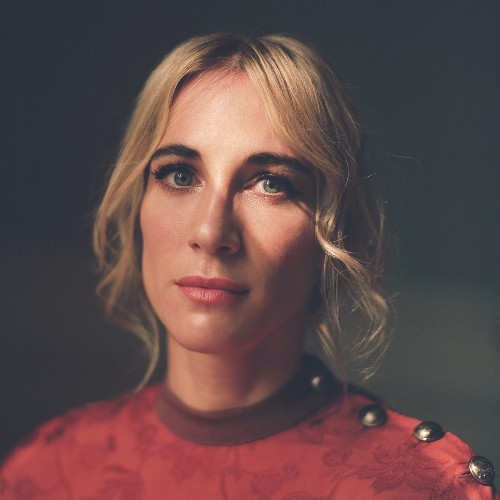
Company: Metafilms
Qualifying film: Simple Comme Sylvain (The Nature of Love)
Nancy Grant joined Metafilms in 2008 and has produced several award-winning shorts and feature films. Her recent film Simple Comme Sylvain (The Nature of Love) premiered at Un Certain Regard at the Cannes Film Festival in 2023.
Jason Levangie, Marc Tetreault

Company: Shut Up & Colour Pictures
Qualifying film: The Queen of My Dreams
Shut Up & Colour Pictures, based in Nova Scotia, develops and produces feature films, special projects and television. The company has produced six features, and their latest film, The Queen of My Dreams, is set to premiere at TIFF 2023.
William Woods, Allison White

Companies: Woods Entertainment, Sara Fost Pictures
Qualifying film: The King Tide
William Woods is the founder and co-president of Game Theory Films, a boutique distribution company. Allison White is an award-winning producer whose career began with Cast No Shadow, which was nominated for four Canadian Screen Awards, including Best Motion Picture. Their latest collaboration, The King Tide, will premiere at TIFF 2023.
Kevin Tierney Emerging Producer Award
Anam Abbas

Companies: Other Memory Media, Citylights Media
Qualifying film: In Flames
Award-winning Pakistani and Canadian filmmaker Anam Abbas runs Other Memory Media. Her first feature, Showgirls of Pakistan, released globally by VICE in 2021, amassed over 1.2 million views. Her first fiction feature, In Flames, had its world premiere at Directors’ Fortnight at the Cannes Film Festival 2023 and will have its North American premiere at TIFF 2023.
Michael Tanko Grand

Companies: Grand Scheme Productions, 666 Films Inc
Qualifying film: Satan Wants You
Michael Tanko Grand has produced three feature documentaries including Satan Wants You, which had its world premiere at SXSW 2023 and its Canadian premiere at Hot Docs 2023. Michael is also known for Finding Big Country and Abandoned, and for consulting on the controversial breakthrough miniseries Surviving R. Kelly.
Alona Metzer

Company: Leilani Films
Qualifying film: Backspot
Alona Metzer is a Toronto-based producer whose passion lies in collaborating to create work that sits at the intersection of art and entertainment. Her debut feature, Learn to Swim, was selected as one of TIFF Canada’s Top Ten films in 2021. Her most recent film, Backspot, will have its world premiere at TIFF 2023.
Sean O’Neill

Company: Visitor Media
Qualifying film: Swan Song
Sean O’Neill is a producer, writer and director, who founded Visitor Media in 2022. Sean co-created, executive produced and hosted the award-winning CBC Arts documentary series In the Making, which brought viewers inside the lives and work of leading artists at pivotal moments of creation. Swan Song will have its world premiere at TIFF 2023.
Andria Wilson Mirza

Company: Baby Daal Productions
Qualifying film: The Queen of My Dreams
Andria is the Director of ReFrame, Hollywood’s gender equity coalition founded by Sundance Institute and Women In Film (WIF). With her wife, writer/director Fawzia Mirza, Andria runs Baby Daal Productions. The company’s most recent feature, The Queen of My Dreams, a Pakistan–Canada co-production, is set to premiere at TIFF 2023.
Bill C-11 is law. Now what?
Bill C-11 is law. Now what?
After many plot twists and last-ditch efforts, Bill C-11, the Online Streaming Act, has finally became the law of the land. So… what comes next? We reached out to politicians, industry leaders and those with a stake in the outcome to give us their thoughts on what lies ahead
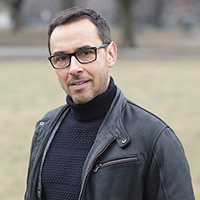
Huge kudos to the government and the Minister for getting the bill passed. Now the real work begins to make sure our reality meets the grand vision. Regulations must bring streaming services into the Canadian broadcasting system and ensure greater support for Canadian programming. And with the government’s recognition of the significant contribution of the Canadian independent production sector, regulations must also ensure there is a foundation for fair negotiations between independent Canadian producers and huge broadcasters and global content companies.
– Damon D’Oliveira, Partner, Conquering Lion Pictures; CMPA Board of Directors
We are living in a historical moment for the Canadian media industry. The future has arrived, and we are at a unique convergence of law, regulation, policy and ideas. The longawaited modernization of the Broadcasting Act will create a more level playing field for our industry, ensuring Canada remains at the forefront of innovation and global competition. There is no shortage of creators and good stories in Canada—stories that define us as a nation. It’s time to collaborate and capitalize on this opportunity to invest in a stronger, more inclusive industry that can excel on a world stage.
– Valerie Creighton, President and CEO, Canada Media Fund
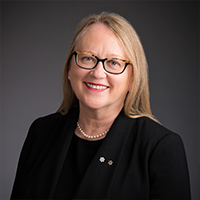

“With all of the complexities surrounding Bill C-11, there has been less focus on the potential it holds for an exciting new era of Indigenous storytelling and economic reconciliation in Canada. The new system must adequately contribute to supporting a robust Indigenous screen sector, and the capacity and ecosystem required for our success. A system that is designed to create access for new and diverse voices and talent will give Canada an edge in a competitive global market and foster the innovative and unique stories we all want to see on our screens.”
– Kerry Swanson, CEO, Indigenous Screen Office
“We must get ambitious about growing the domestic industry. We’ve seen foreign service production explode, and that reflects the global content boom of the past decade, but it’s passed the domestic production sector by. At the WGC, we’ve just watched the aggregate earnings of our Canadian members decline by nearly 22 per cent in inflation-adjusted terms over the past five years. Bringing the streamers into the broadcasting system should mean a much bigger system, not status quo or worse as broadcasters bow out. And Canadian screenwriters must be at the centre of things. They’re the Canadian authorial voice of the medium.”
– Neal McDougall, Assistant Executive Director, Writers Guild of Canada
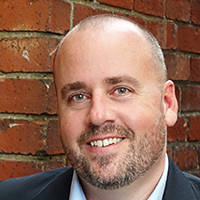
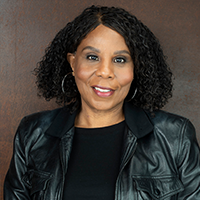
“We are heartened by the federal government’s renewed and strengthened commitment to Black Canadian creators and audiences. We are hopeful that the end result of the extensive public CRTC hearings will be a Canadian broadcasting system that provides more opportunities for Black Canadians to see themselves, and the broader Canadian audience to see content created by Black Canadians. We also look forward to a renewed regulatory framework that will include the streamers and bring more revenue into the Canadian broadcasting system for the creation of Canadian content.”
– Joan Jenkinson, Co-Founder and Executive Director, Black Screen Office
“A modern, forward-looking framework for Canada’s broadcasting system that enables diverse global streaming services the flexibility to play to their strengths will expand opportunities for Canadian creatives; promote content made by, with or about Canadians; strengthen Canada’s production ecosystem; and bring more of Canada to the world. An innovative approach that recognizes the new perspectives and opportunities that global players bring, and ensures flexibility and adaptability for the future, is the best way to ensure support for all the objectives of the Broadcasting Act—cultural, social and economic.”
– Wendy Noss, President, Motion Picture Association – Canada


“This is a defining moment for Canadian film and television. As we move forward modernizing our system, ensuring all players are investing—and invested—in original Canadian programming, we must choose to be bold, projecting ourselves toward a future where Canadian stories continue to break through and thrive. Success on the world stage will depend on a robust independent production sector that meets growing global demand for a diverse range of voices, including sovereignty- and equity-seeking groups. History has taught us our industry can only prosper in an ecosystem guided by clear rules, engaging and activating all players.”
– Dave Forget, National Executive Director, Directors Guild of Canada
“The real challenge will be in the application of Bill C-11. The CRTC must now develop real expertise in the streaming and internet space, because it’s not a sector that it previously regulated. Since quotas are excluded, the Commission will probably have to adopt a case-by-case approach for Canadian, francophone or Indigenous content expectations for each platform. Except for reiterating that the impact on algorithms should be minimized, the government’s directives to the CRTC give little indication of how “discoverability” of francophone music on platforms like Spotify and YouTube should work. This is an important issue for me, because I am concerned about the small percentage of francophone music consumed on these platforms. The directives also do not specify what is to be considered a Canadian production, which is a key issue for the industry. So we’ll have to be very patient.”
– The Hon. Julie Miville-Dechêne, Senator (ISG)


“During the Senate’s study of Bill C-11, I worked closely with groups like the Black Screen Office, whose team are hopeful that the Online Streaming Act will positively impact their communities. They want to produce content about people we don’t see or hear from as much as we should—and we know their stories are important to audiences in Canada and the world. I’m hopeful that Bill C-11 will help us access content that reflects the diversity of this country. We’re all seeking connection. As regulations are developed, marginalized voices need to remain at the forefront.”
– The Hon. Bernadette Clement, Senator (PSG)
“ACTRA fought hard alongside our guild friends and the industry to ensure our voice was collectively heard in the federal government’s recent modernization of the Broadcasting Act. Despite the passing of Bill C-11, we recognize the fight is not over. We must continue our advocacy to ensure the CRTC policy direction on its implementation will promote Canadian content and Canadian production, and develop and nurture the professional artists and other talent essential to bringing stories to life. Ahead of us are even more challenges, created by the advent of new technologies and the shift to digital, which have a significant impact on performers and their work”.
– Marie Kelley, National Executive Director, ACTRA
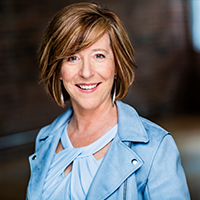
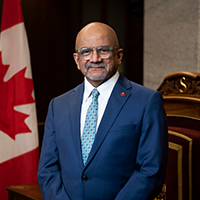
“Now that Bill C-11 has passed and its intent is clear, consultations to make the regulations are under way, as are negotiations between the federal government and the stakeholders, web giants included. I do think that this bill creates a good balance, a logical balance, between the needs of Canadian producers, broadcasters and the major platforms. I hope this discussion moves away from one of the multinational web giants versus the Canadian democratically elected governments.”
– The Hon. Andrew Cardozo, Senator (PSG)
French class
French class
Implemented in 2021, France’s plan to fold international streaming platforms into its regulatory framework—and have them help fund French content—seemed ambitious. Set against the backdrop of Canada’s Bill C-11, which is now law, we look at how France’s efforts are playing out today, and what Canada can learn from our French counterparts
Just over a decade ago, France found itself in a sticky predicament. Known for prizing its national culture, the government planned to digitize and restore 1,000 French films, to preserve them for future distribution and prevent them from vanishing into the past.
The plan hit an unexpected roadblock. It turned out that the material assets of all of the French feature films coproduced with major American studios in the ’70s and ’80s—films starring screen legends like Jean-Paul Belmondo and Catherine Deneuve—were in the hands of those studios, languishing on crammed shelves in California storage lockers. The studios told the French stakeholders that digitizing the films wasn’t a priority, and that was that.
“It was a grotesque situation,” says Jérôme Dechesne of France’s producers’ union, the Union syndicale de la production audiovisuelle (USPA). “Assets for French films that we had hoped to preserve were now out of reach to us. It was a shocking realization for all French stakeholders.”
France had learned the hard way that only France could be counted on to protect its cultural heritage. Fast forward 10 years to 2021, when France put its stake in the ground with the introduction of the Services de medias audiovisuels à la demande (SMAD) decree—which compels all international SVOD platforms operating in France to invest a percentage of their French revenues into local production, just as French television channels have long had to do.
Sound familiar? The French experience has many parallels to Canada’s own efforts to regulate global streaming services, but since France is further along in its journey, it’s worth highlighting several areas where we might follow its example (or simply take heart that the battle is not in vain).
Investing in independent
In France, L’Autorité de régulation de la communication audiovisuelle et numérique (Arcom)—the French counterpart to our CRTC—oversees the implementation of the SMAD decree, which stipulates that on-demand streaming services must invest at least 20 per cent of their annual gross revenues earned in France to financing French or European TV or film content (split 80/20 between TV and film, respectively). And this is on top of a 5.15 per cent tax already charged to streamers and other international platforms, including YouTube, to contribute to the audiovisual support fund run by the Centre national du cinema et de l’image animée (CNC).
It gets more specific, with investment to be allocated across a variety of audiovisual works (drama, animation, documentaries) and feature films, depending on the platform’s focus. As well, at least two thirds of the investment in TV must be funnelled into independent production.
While France is not the only European country to have production obligations in place for foreign streamers, its investment targets are higher than most. The result? The streamers’ audiovisual expenditures in France in 2023 have reached the equivalent of C$432 million, with spinoff benefits reaching nearly $1.5 billion.
IP retention or bust
One of the SMAD decree’s fundamental principles is protecting the IP of French creators, and it accomplishes this in a clever way: first, as noted above, by insisting that a large percentage of investment goes toward independent production (where the streaming platform has no shareholding interest), and second, by refusing to allow streamers to hold rights in perpetuity.
What is notable is that the streamers can only hold the rights to an independent production for a maximum of six years, and exclusive rights for three years. If a streamer wants to maintain the rights, they must actively renew them under specific terms. This allows companies like Netflix—which places exclusivity at the centre of its business model and “lobbied the government hard” over the issue, according to Dechesne at the USPA—to have it their way, but only for so long.
Critically, this principle “allows French producers to be the decision makers. This can lead to spinoff opportunities, adaptations, format sales and new revenue,” says Dechesne. “Moreover, it allows all rightsholders—including co-producers, writers, actors, et cetera—an opportunity to also realize additional revenue from these renewals, in a virtuous circle.”
After the kicking and screaming, peace
Nobody involved would say negotiating with the streamers was a walk in the park, with foreign companies chafing especially at the obligation to invest in independent French-language works. But the French stakeholders respected their own right to be at the negotiating table, and fought the impulse to water down their ambitious goals.
That was then. The dust has settled, and the system now seems to be humming along quite nicely.
“Particularly at the time of the establishment of the SMAD decree, there were threats—or grave concerns— on the part of many players. Today, two or three years later, these concerns have been swept away and we are in the process of undertaking new interprofessional negotiations,” says Dechesne.
To see France on the other side of its own legislative upheaval, smiling and in good health, is a bracing reminder to our own lawmakers and stakeholders to stay the course. Aim high. And insist on independence.
Geena Davis Institute celebrates 20 years of tackling sexism on screen
Geena Davis Institute celebrates 20 years of tackling sexism on screen
Two decades in, the Geena Davis Institute is inspiring Canadian groups such as Reelworld and Women in View to tackle representation on screen using hard data
“When we don’t look at who is behind the camera… we’re taking for granted the fact that the narrative is culturally a singular narrative that is not representative of the total Canadian population.”
This year’s WIVOS Report is its seventh iteration, having led the charge in national on-screen equity reporting in its previous six reports. “Data is hugely influential in addressing change,” says Jan Miller, board member of Women in View. Miller is also part of the WIFT (Women in Film and Television) Canada Coalition, as well as a founding member of the National Screen Institute of Canada (NSI).
“Each time the report came out, it influenced change. What started to happen was other agencies started to recognize the value of the numbers and the value of the statistics. And so they began their own reporting,” she reveals.
Key research points in previous reports include the monetary investment in women’s stories, the percentage of films produced by women, and— of that percentage how many were produced by white women versus Black or Indigenous women. Positive change started to trend as a result.
But if the findings indicate a trend toward less equity in the industry, does the industry call itself out for not doing the work? And if so, how do we move forward?
Tonya Williams has been doing that work with Reelworld Screen Institute for 23 years. The Toronto-based not-for-profit’s mission is “to advance opportunities for Canadians who are Black, Indigenous, Asian, South Asian, and People of Colour in the screen industries by providing professional development and advocating for racial equity in Canadian content and production.”

Reelworld is just now releasing the BIPOC protocols guideline for addressing the depiction of Black, Indigenous, Asian and women of colour in Canadian screen content. The research project informing the protocol guideline is called Her Frame Matters.
Williams, who played Dr. Olivia Winters on The Young and the Restless from 1990 to 2012, continually noticed she was the only Black person in a room at any given time—in drama school, at auditions, at roundtable discussions.
“All of these instances reinforced to me that, ‘You are an anomaly to the rule,’” Williams says. “It’d be an audition filled with white people and I was the only Black person. So I pretty much felt the confidence that I was getting the role of the Black person.”
Safia Abdigir, a researcher for Her Frame Matters, says they wanted to collect the data, look at historical depictions of BIPOC women, and then create best practices and an outline on ways to move forward.
“When we are requesting shifts in the industry, the ‘why’ is asked,” says Abdigir.
“Having the data and research is important to be able to prove it and to show exactly the issues that we’re dealing with. If we’re not really specific about what the issues are, we can’t really be specific about moving forward in terms of recommendations.”
On Her Frame Matters, Reelworld conducted content analysis on a combination of films and TV series on their depictions of women, including what the roles were, how long they were on screen, whether they pushed the plotline forward, their role in the story, and particular ways in which they were sexualized or not sexualized.
What all three institutes have in common is threading together the story that data and research tell.
“I’m looking forward to the phase where we get down to the really hard work of recognizing all the systemic problems in the entire structure of our industry,” says Williams, “and how we can, slowly, over the next 20 years, create a strategic plan, where we can see the data means things are improving or not improving.”
For Di Nonno and the work done at the Geena Davis Institute, women seeing themselves represented is key—and now they have the data to back it up.
“We want to see ourselves in the stories that we’re watching. When we see ourselves, we get the message that, well, maybe I can do that. For example, in Hidden Figures… all of those young Black girls seeing that story and saying, ‘Wow, you know, I could send somebody to the moon!’” she says.
In fact, one of the institute’s 58 key findings includes a data point that proves just that. It’s called the Scully Effect, referencing the character of Dana Scully from The X-Files, played by actor Gillian Anderson.
“They actually asked us to validate that, and we found that 63 per cent of the women who are currently working in STEM were inspired by her,” confirms Di Nonno.
“That’s amazing. That’s real-world impact.”

France Martin hits the ground running
France Martin hits the ground running
The new Executive Director of the Youth Media Alliance takes her positive attitude to a sector in flux: “This industry can go as far as it wants”
France Martin hasn’t been on the job very long—she assumed the role of Executive Director of the Youth Media Alliance (YMA) in April 2023. She’s also a newcomer to the screen industry, though she comes armed with plenty of executive experience in the non-profit sector, leading organizations from the Canadian Kinesiology Alliance to the Fondation des Offices jeunesse internationaux du Québec.
Still, she didn’t need much time to recognize that “change” is the watchword for Canada’s media industry in general, and youth media industry in particular. Seismic platform shifts. Bill C-11. The double-edged promise of AI.
“The industry is going through major transformation,” Martin says. “Just think of the outstanding quantities of new material now available to children. How can creators and producers make something that stands out from the group and gets selected by children or their parents?”
At YMA, it’s Martin’s mission to help producers do just that. Through advocacy, scholarship funds, an awards gala, and lowering barriers to access for different festivals, YMA is committed to ensuring that quality Canadian children’s content continues to get made.
To be sure, the obstacles are myriad. Martin mentions the crowded field of distribution channels, from traditional broadcasters to streamers to platforms like YouTube and TikTok. Says Martin, “We’re faced with the challenge of making sure there is Canadian content on streaming services, for example. And how do we get streamers involved in our associations and our industry and with our stakeholders?”
One way she is tackling this specific challenge is by assuming the role of a host at a party: doing her best to ensure that everyone knows everyone else. “We make sure that we’re in touch with the big names, and in turn, we put them in touch with our producers,” she says. This is the first step toward filling the production pipeline with high-quality kids’ content.
And while Martin sees geographical boundaries dissolving in the way that shows get produced— she mentions, as an example, a Montreal producer who’s making a series with a team assembled from three separate countries— YMA is dedicated to supporting the production of distinctly Canadian content.
“We are a Canadian organization,” she says, “and our priority is helping Canadian creators.”
In the short time she’s been at the helm of YMA, it seems Martin has already developed a key focus: improving access to content for children. This means bringing the content to the audience, rather than the audience to the content, and making that content visible around every corner, from YouTube to traditional TV.
“The best strategy is to be on many platforms at a time,” says Martin. “If I were to define success in five to seven years, it would be that whatever is produced, children and families are accessing it in as many ways as possible, for their entertainment and their education.”
Of course, in such a rapidly changing environment, it’s hard to make predictions about the next five months, let alone the next five years. It’s a thought that energizes Martin: “There’s major transformation coming along, and we are adjusting as we go. There is so much creativity and positivity in our sector, and so many new technologies, from animation to live action to video games. I think that’s fabulous. And in five or seven years, we can have this discussion again, and we’ll look back and say, ‘Wow. Where were we way back then?’
“This industry can go as far as it wants.”
Breaking down the barriers
Breaking down
the barriers
A conversation with Winnie Luk, Executive Director of the Disability Screen Office
The Disability Screen Office (DSO) has a two-pronged mandate: the organization works to eliminate accessibility barriers and foster meaningful disability representation within the Canadian screen sector. Earlier this year, the DSO hired Winnie Luk as its new (and first) Executive Director. Luk has embraced her new role with extraordinary enthusiasm. She shares with Indiescreen why she is tailor made for this role, and outlines her plans to break down barriers to accessibility and representation for the disability community.
“Everyone will experience some type of disability in life,” says Luk, “whether by accident or aging. If you’re not invested in accessibility, you’re not doing yourself any favours.”
What were you doing before you stepped into this role at the DSO?
I started this role in June, and it actually felt very fateful when I was hired, because of my work history. Before and all through university, I was working in accessibility programming with the City of Toronto, and after graduating, I took a position with Inside Out, the queer film festival. Inside Out was essentially my dream job and my dream organization, and I got to work there for more than 15 years. I was the director of operations when I left to work as managing director for Rainbow Railroad, which was in its start-up phase at that time. Rainbow Railroad is a charity non-profit organization that helps persecuted LGBTQI+ individuals around the world escape violence.
That sounds like very serious stuff.
Very serious stuff. I spent a really incredible four years building up that organization, but faced burnout in a sector where my work really was life and death. So I was taking some time off to explore what I wanted to do next when I saw the DSO posting for their first ever executive director. I was attracted to the fact that the DSO is a very new organization, because I’m a builder—I build organizations. When I was hired, I reflected back on my career and everything I had done, and thought, Wow. Every choice I made, every move I made really made me perfectly suited for this role, especially the last four years working in human rights.
Being the leader of a brand-new organization sounds exciting— but also daunting. What are your first priorities?
The first few things that I’m planning to do are solidify our strategic plan, complete our communications plan, and build the actual infrastructure for the organization. Obviously getting sustainable funding is a priority, and not just programming funding, but operations funding. I understand that programming is very sexy and everyone wants to support programming, but if you don’t have a solid infrastructure then the programs and everything else don’t have a solid foundation. I cannot say enough about how important sustainable, unrestricted funding is to a new organization, to set it up successfully and on the right footing.
How would you gauge the response from the industry to the DSO so far?
Since day one, I’ve been meeting with folks and organizations, including other equity-seeking organizations, to think about collaborations and partnerships. I’ve been meeting so many incredible new people, organizations, businesses, corporations—everyone within the sector has been welcoming, supportive, encouraging, and really wanting to get involved in the work. We’re at this tipping point right now, where everyone agrees that change is needed. And it’s not needed presently, it was needed a long time ago. The screen sector is quite behind in disability matters, and people know it. And if you are not with us right now, you are going to fall even further behind.
Can you talk a bit about what the DSO is trying to achieve?
We’re working on two things: accessibility is about breaking down barriers, it’s a human right, it’s law. But then there’s representation when it comes to visibility as well, in front of and behind the camera. We’re going to provide the guidelines and standards and protocols for working with the disability community, but we also believe there should also be some real accountability. That’s where our production disability coordinator training comes in (see sidebar).
We need to be thoughtful and work with people who have experience. I know there’s a workforce shortage right now; that’s a huge opportunity. The sector can welcome in folks who are willing and ready to work, and make use of their innovation and their creativity—because people with disabilities have had to constantly adapt, because of the barriers they’ve faced. Imagine the skills, the knowledge, the learning that this community has. Imagine how the sector can benefit from that.
What the DSO is working on
In order to increase accessibility within the screen sector, the DSO has three initiatives it’s planning to launch this year:
1) Develop guidelines to help the screen sector work with the disability community. The first phase of this project will focus on data collection, “because there’s so little data out there, and what is out there is not necessarily accurate, since divulging disability is hard for people—they still feel stigma, and there are a lot of barriers to talking about it,” says Luk.
2) Create a centralized industry resource centre. Luk calls this project “a one-stop shop for everything disability related in the screen sector”: from crew to venues to accessible services. “My inbox is filled with inquiries about disabled creatives, workers, actors, and on the other side, people needing to find assistive technology services, interpreters, open captioning services. We want to be that place that everyone knows to come to and get linked up to whatever they’re needing,” Luk says.
3) Train accessibility coordinators to work with the screen sector. Luk believes that accessibility commitments are fantastic first steps, but accessibility coordinators on set can bring accountability and ensure productions are meeting those commitments. “There’s already an immense group of people who have the skills and knowledge, who just need opportunity,” says Luk. “There should be some real accountability in the sense of what it means to be accessible, and truly disability led.”

They got next
They got next
Checking in on recent alumni of the CMPA mentorship program
Nic Altobelli

MENTOR: Sara Blake (Ceroma Films)
HIGHLIGHTS FROM YOUR MENTORSHIP EXPERIENCE?
Attending the Berlinale Market online and learning more about international co-productions.
WHAT ARE YOU WORKING ON RIGHT NOW?
I am in the 2023 cohort of the CFC Producers’ Lab, collaborating to create a film that will hit the festival circuit later this year. My MPPIA Award–winning short film My Roommate Ahriman will premiere at the Whistler Film Festival. As well, I’m participating in the GEMS Genre Film Lab to pitch our feature film, Mt. Asha, at Frontières Film Market. I also have a few TV series on my slate!
WHERE WILL YOU BE IN 10 YEARS?
Running a mid-sized production company, producing media that subverts human struggle through engaging, diverse characters and dynamic stories. At the tables where important conversations are happening around where the industry is headed and what needs to change.
Malachi Ellis
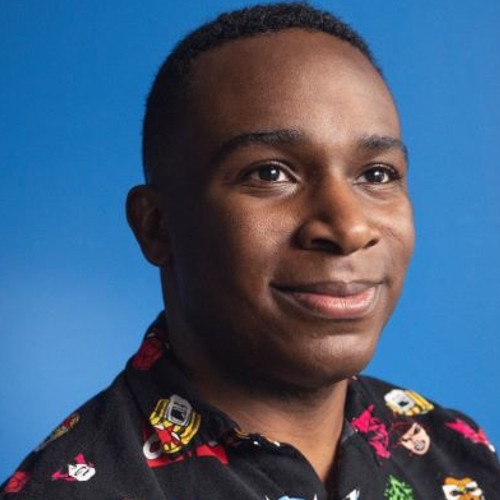
MENTOR: Shant Joshi (Fae Pictures)
HIGHLIGHTS FROM YOUR MENTORSHIP EXPERIENCE?
Attending industry events such as Prime Time. I made incredible connections and bonded with other mentees and emerging producers.
WHAT ARE YOU WORKING ON RIGHT NOW?
I am currently a resident of the CFC’s Norman Jewison Film Program Producers’ Lab. I have two feature film projects in development, and my short film, Express, will begin its festival journey this September.
WHERE WILL YOU BE IN 10 YEARS?
Creating my own MCU: the Malachi Cinematic Universe. This MCU will feature stories of identity and self-discovery from talented Canadian voices, both in the feature film and television space.
Linda St. Pierre
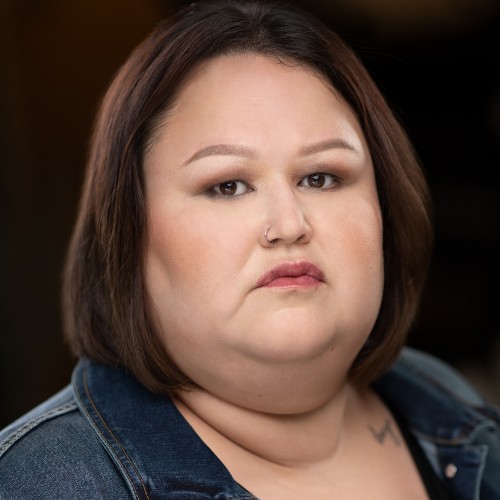
MENTORS: Marie Clements, Trish Dolman, Christine Haebler, Suz Thompson (Marie Clements Media, Screen Siren Pictures)
ANY HIGHLIGHTS FROM YOUR EXPERIENCE?
Seeing Bones of Crows come together and walking the red carpet at VIFF. The story hit home, as it’s based in Manitoba, where I’m from and where my family would have attended residential school.
WHAT ARE YOU WORKING ON RIGHT NOW?
My company, Phoenix Skye Productions, is in pre-production for two short films: Choices, which was selected by TELUS STORYHIVE Indigenous Storyteller Edition, and an animated documentary short called Bet’sune Yinesha (His Grandmother Raised Him), which will be filmed in Lac Brochet, Manitoba. It will be told by my elders in the Dene language, and I’ll be directing as well.
WHERE WILL YOU BE IN 10 YEARS?
A powerhouse writer, actor, producer and director, sharing my Dënesųłiné language through TV and films, and making more Indigenous stories.